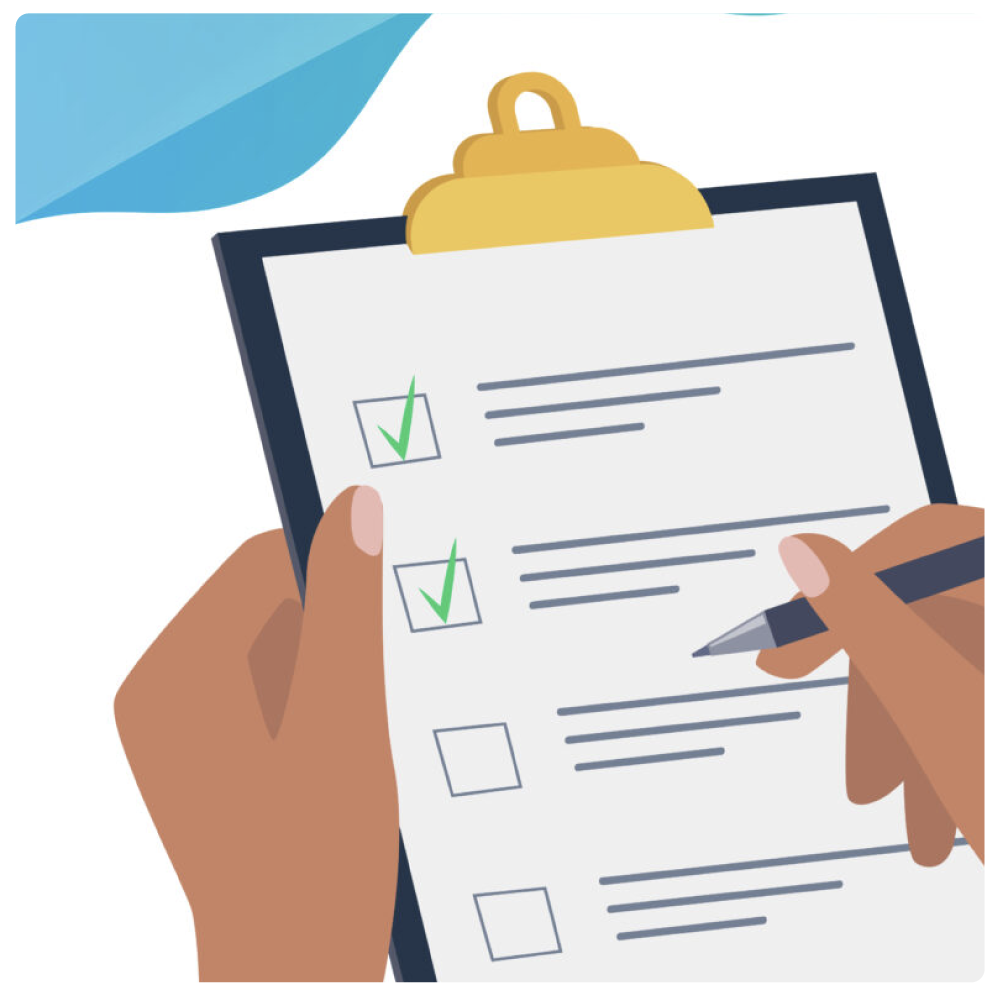What is consent-based marketing?

Written by Steve Rafferty, originally published December 3, 2020; updated January 30, 2025.
Consent-based marketing is the practice of only contacting consumers that have given their prior express written consent to be contacted. The objective is to ensure that only “active prospects,” or those who have actively expressed interest in hearing from you, make it into your funnel.
With this form of marketing, you have the added benefit of verifying that the prospect meets your criteria before you contact them. With many marketing partners, you only pay for the prospects that meet your criteria – a huge advantage over other marketing channels.
Consent-based marketing vs. permission-based marketing
Although they might seem similar, there are a few substantial differences between these two marketing practices.
What is permission-based marketing?
The concept of “permission marketing,” also referred to as “permission-based marketing,” was introduced by marketing expert Seth Godin in 1999. It centers on the principle of obtaining consumer consent before sending promotional messages. However, the issue often lies in the clarity and explicitness of this permission.
How is consent-based marketing different from permission-based marketing?
While they are similar, consent-based marketing is a higher standard. True consent-based marketing hinges on a legal definition of consent that must be clearly expressed and comprehensible to the consumer. The challenge with permission marketing is that everyone has a different definition of “permission.”
Often “permission” is buried in a privacy policy that the prospect did not read when signing up or requesting more information about a product or service. This could be sufficient for meeting the legal definition of “prior express invitation or permission,” but this is a lower standard of consent and may not be sufficient for your planned telephone or text message outreach campaigns. In contrast, consent-based marketing is based on a more strict legal definition of consent, per regulations like the Telephone Consumer Protection Act (TCPA).
Consent must be clear and conspicuous to the consumer. Brands that truly respect the relationship with their consumers show that respect by only reaching out with consent. A simple test is to ask: “Is the consumer expecting this outreach?”
Consent-based marketing key components
Prior express written consent
As defined by the TCPA, “prior express written consent” is “A signed, written agreement between the consumer and seller, which states that the consumer agrees to be contacted by this seller and includes the telephone number to which the calls may be placed.”
This form of consent requires a clear, written, and signed agreement from the consumer, along with a prominent language indicating that the consumer can withdraw their consent at any time. Businesses can gather consumer consent through different methods, including online forms, paper documents, and in some instances using text message responses.
Learn more about prior express written consent here.
Consent documentation
Both lead buyers and sellers must obtain and store records of consent documentation. Additionally, the Telemarketing Sales Rule (TSR) enforced by the Federal Trade Commission (FTC) mandates that businesses engaged in communication outreach preserve these records for five years following the date of consent and outreach.
Such documentation is crucial for defending against regulatory investigations or legal challenges, serving as evidence of the consent transaction.
Consent revocation
It is essential to make it unmistakably clear that the consumer retains the right to revoke their consent at any time and through any reasonable means.
Learn more about revocation of consent here.
Consent-based marketing best practices
Capture consent of interested consumers
Consent-based marketing begins with an interested consumer. When that consumer provides their contact information, typically responding to some sort of offer from the marketer, they are asking to start the conversation. That is the start of the relationship.
Document consent for record-keeping
There are a variety of regulations that govern contacting consumers with marketing messages, in particular the TCPA. If you have documented prior express written consent, you can contact consumers on their cell phones, via SMS, or using automated dialing technologies. Documented consent allows you to demonstrate compliance and protect yourself from liability.
Identify the best prospects and pay accordingly
Once you have received the opt-in lead with documented consent, you could use the information submitted by the consumer to help you identify the prospects most likely to become your customers. Typically, this involves first checking if you have an existing relationship with this consumer (is this a duplicate of an existing record?). Using real-time data services to enhance your lead data, you can identify more qualifying information about the consumer.
Filter & reject unwanted leads
Inevitably you will receive leads that, for a variety of reasons, will never become customers. They might be fraudulent, uncontactable, duplicates, or simply not qualify for your product or service. You should also use data services to help determine if the individual is on the national Do Not Call (DNC) list, individual state DNC registries, or the Reassigned Number Database (RND) service for recent phone number changes.
It’s important to have a system in place that will filter out, in real time, any leads that don’t meet any of your qualifying criteria. Many cost-per-lead marketing partners won’t charge marketers for leads that are rejected in real time.
Contact the consumer promptly
After requesting contact, consumers expect to hear from you promptly. It is important that the lead data is delivered into your CRM, database, or call center in real time. For example, every form submission should be followed up by a real-time confirmation email. This is standard practice. In fact, there have been a number of studies on lead follow-up that show the quicker the follow-up, the higher the conversion rates.
Our mission: Making consent-based marketing the best channel for customer acquisition
Despite laws like the TCPA, the Telephone Sales Rule (TSR), and the CAN-SPAM Act, aimed at curbing unsolicited consumer outreach, non-compliant or illegal high volume outreach continues to be a strategy used by some risk-taking marketers, as it apparently yields some successful sales. But is it worth the growing legal risk?
At ActiveProspect, we are committed to offering a more respectful alternative by promoting consent-based marketing as the premier channel for customer acquisition. We believe that by enhancing the success of this channel, we can significantly decrease the volume of unsolicited outreach consumers face.
Consent-based marketing solutions
Consent-based marketing solutions are tools and strategies that enable businesses to obtain and manage consumer consent for marketing communications. These solutions help ensure that businesses comply with legal regulations, build trust with customers, and improve the effectiveness of their marketing campaigns.
Benefits of consent-based marketing solutions
Here’s why businesses should rely on consent-based marketing solutions for their marketing campaigns:
- Regulatory compliance: With the increasing emphasis on TCPA regulations, businesses need to ensure they are compliant to avoid hefty fines and legal issues. Consent-based marketing solutions help achieve this compliance seamlessly.
- Enhanced customer relationships: By focusing on consent and preferences, businesses can tailor their marketing efforts to meet the specific needs and interests of their audience, leading to stronger customer relationships and better overall customer experience.
- Ethical marketing: Adopting consent-based marketing solutions aligns with ethical standards and promotes responsible use of consumer data, which is becoming increasingly important to consumers.
- Competitive advantage: Businesses that prioritize consent-based marketing can differentiate themselves from competitors who may still use intrusive or non-compliant marketing methods, thereby attracting more customers who value privacy and respect for their choices.
- Operational efficiency: Automating consent management and integrating it with existing marketing platforms can streamline operations, reduce manual workload, and improve the efficiency of marketing efforts.
ActiveProspect offers consent-based marketing solutions to help you keep compliance at the forefront of your marketing efforts.
LeadConduit
LeadConduit streamlines your cost-per-lead (CPL) acquisition process to efficiently acquire customers at scale. Custom lead flows automatically enhance and filter leads in real time to deliver the highest-quality prospects to your CRM or lead buyer.
LeadConduit helps thousands of brands increase their ROI, reduce fraud, and increase their efficiency by streamlining lead acquisition and distribution processes. Eliminate error-prone manual work to normalize, maintain, and sync data between different lead vendors and tech stacks.
TrustedForm
TrustedForm is the ultimate compliance solution for the lead generation industry. TrustedForm documents TCPA consent on digital lead capture forms, offering a number of different products:
- TrustedForm Certify issues certificates of lead authenticity that can be retained for your own use and/or shared with others.
- TrustedForm Retain guarantees certificate availability for up to five years.
- TrustedForm Verify optimizes the consent capture process by enabling users to identify and categorize TCPA consent language for different lead vendors.
- TrustedForm Insights allows you to make informed decisions to optimize lead-buying strategies and maximize your ROI.
LeadsBridge
LeadsBridge automates your customer acquisition process by seamlessly integrating major ad platforms with your existing marketing technology. With over 380 integrations, you can drive new revenue and increase efficiency by syncing leads in real time, tracking online and offline conversions, and targeting custom audiences.
LeadsBridge partners with the top global advertising platforms, including Meta, Google, LinkedIn, and TikTok to provide unique benefits to users.
Unlike many integration platforms out there, we offer highly specific integrations to make your advertising and marketing experience seamless and headache-free. Our platform is designed specifically for marketing and advertising integrations, ready at the click of a button.
Book a free demo now to see how LeadsBridge works!
Final thoughts
With the right processes and technologies in place, consent-based marketing can be the best channel to efficiently and safely acquire customers who truly want to be contacted by your brand.
Consent-based marketing solutions are essential for modern businesses to ensure compliance with regulations, build trust with customers, and enhance the effectiveness of their marketing campaigns. By relying on these solutions, businesses can foster positive customer relationships, improve engagement, and maintain a competitive edge in the market.
To learn more about how consent-based marketing could benefit your business, contact us today.








